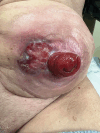Stoma Complications
- PMID: 39399130
- PMCID: PMC11466528
- DOI: 10.1055/s-0043-1777453
Stoma Complications
Abstract
Stoma-related complications are among the most common sources of perioperative morbidity in colorectal surgery. Complications can occur intraoperatively, in the immediate postoperative period, or even months to years after stoma creation. Although some will require urgent surgical intervention, most are treated nonoperatively with a combination of education, appliance adjustment, and behavioral intervention. Optimal management of stoma complications nearly always requires a multidisciplinary team approach, including surgeons, enterostomal therapists, and other allied health professionals, depending on the specific situation. Patients with a functional stoma should be expected to be able to do anything that patients without a stoma can do with minimal exceptions. The treatment of stoma complications therefore centers on improving stoma function and maximizing quality of life. Although timely and comprehensive intervention will result in the resolution of most stoma complications, there is no substitute for preoperative planning and meticulous stoma creation.
Keywords: colorectal surgery; stoma; surgical complications.
Thieme. All rights reserved.
Conflict of interest statement
Conflict of Interest None declared.
Figures







References
-
- Damle R N, Cherng N B, Flahive J M et al.Clinical and financial impact of hospital readmissions after colorectal resection: predictors, outcomes, and costs. Dis Colon Rectum. 2014;57(12):1421–1429. - PubMed
-
- Wick E C, Shore A D, Hirose K et al.Readmission rates and cost following colorectal surgery. Dis Colon Rectum. 2011;54(12):1475–1479. - PubMed
-
- World Health Organization Obesity and Overweight 2021. Accessed October 10, 2023 at:https://www.who.int/news-room/fact-sheets/detail/obesity-and-overweight
-
- Meagher A P, Owen G, Gett R. Multimedia article. An improved technique for end stoma creation in obese patients. Dis Colon Rectum. 2009;52(03):531–533. - PubMed
Publication types
Grants and funding
LinkOut - more resources
Full Text Sources

